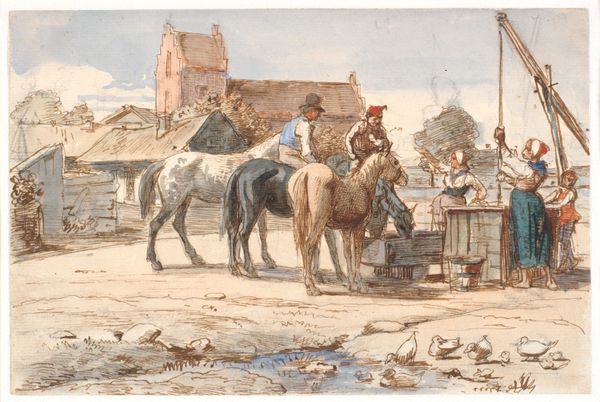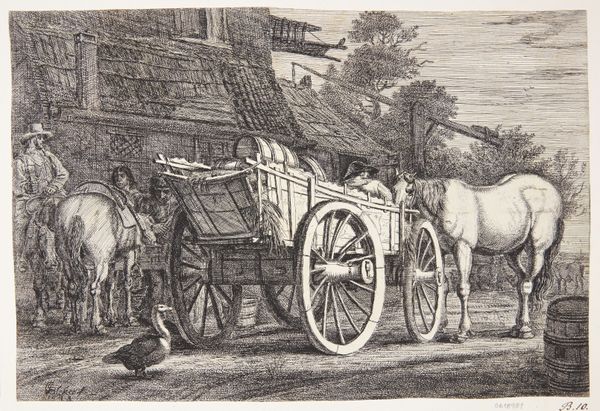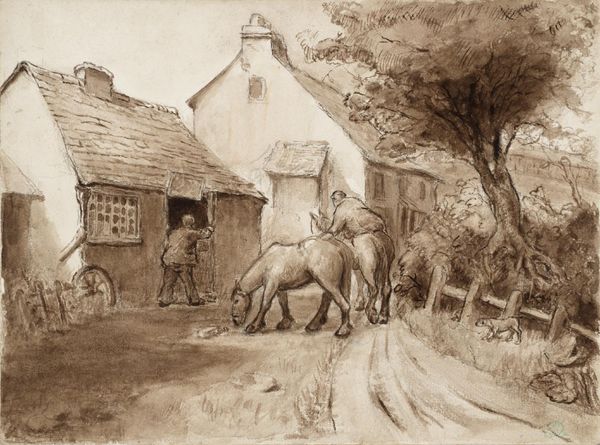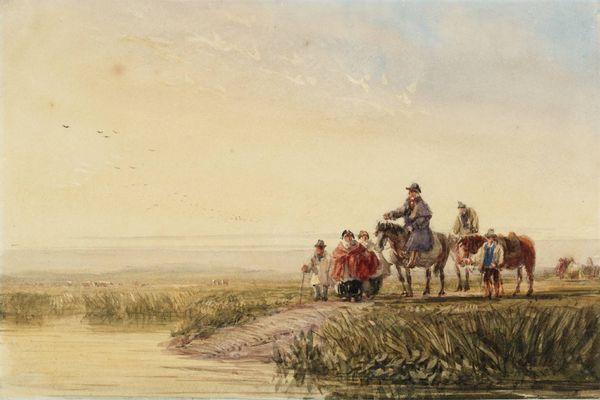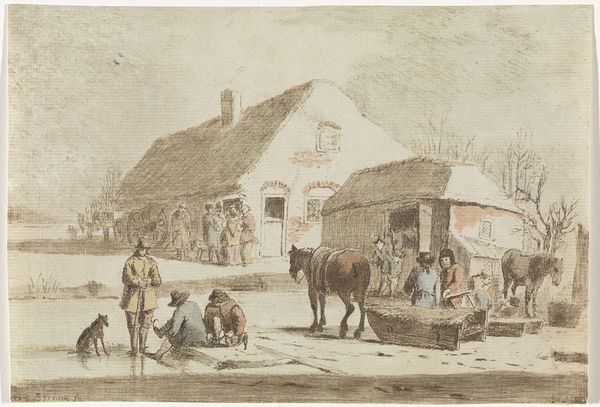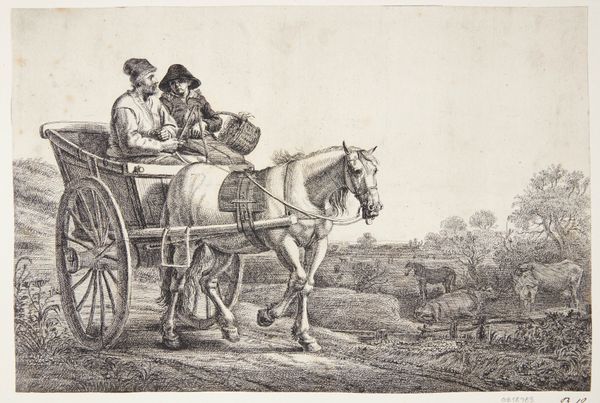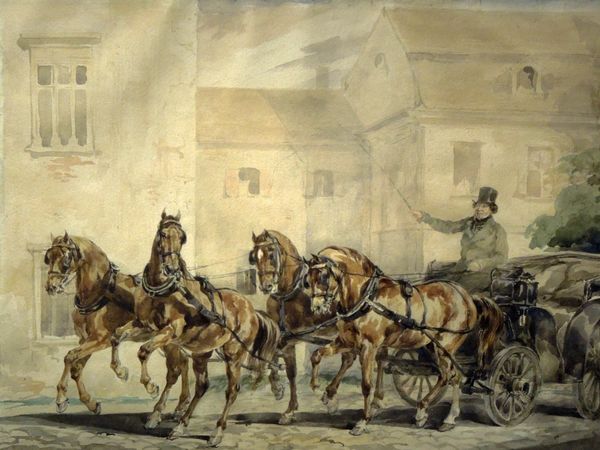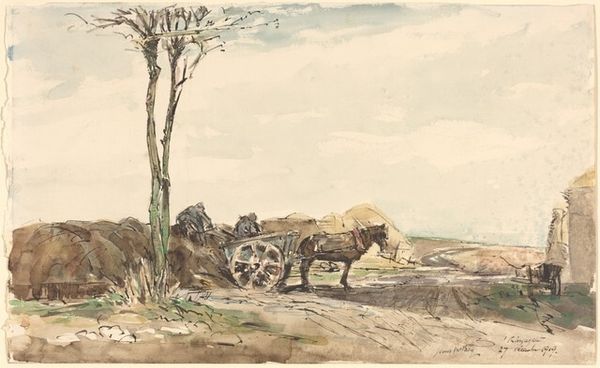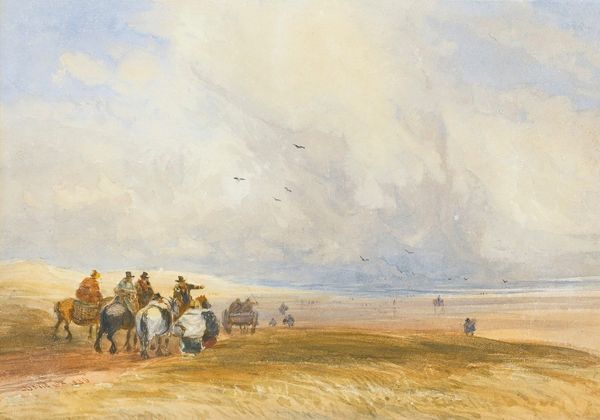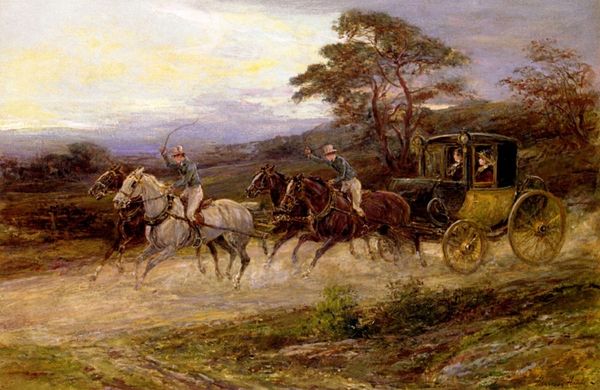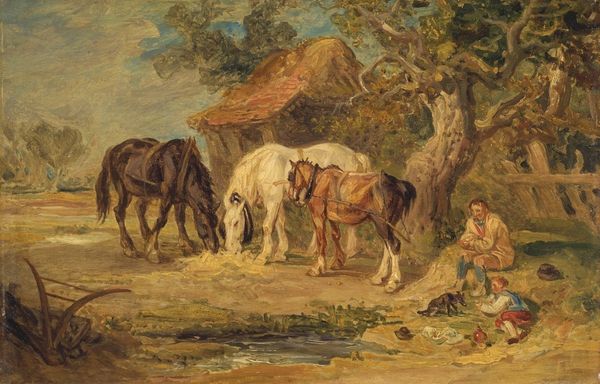
painting, watercolor, ink
#
painting
#
landscape
#
watercolor
#
ink
#
genre-painting
Copyright: Public Domain: Artvee
Curator: What strikes me first is the soft, almost dreamlike quality of this piece. It feels very idyllic. Editor: Indeed. Let’s delve a bit into Wilhelm Marstrand’s “By the Well Outside the Village,” created between 1810 and 1873. It employs watercolor and ink, a testament to the delicate sensibilities of the time. The painting, essentially, is an oil on paper, right? Curator: Yes. A captivating depiction of rural life! I am particularly intrigued by how the image constructs our view of agrarian communities. There's a certain idealization, isn’t there? Notice the way the figures are positioned. It invites us to imagine them and how the men on horses are positioned higher than the well-keeper who does most of the heavy lifting. How do the figures negotiate access to water? I think the painting speaks to dynamics around social hierarchy, gender, and rural economies. Editor: The clothing really pinpoints certain power dynamics. A red hat on one of the men while the ladies' heads are tied up as well; It is impossible to ignore these nuances and what it means for who has autonomy within the village. What seems like just a charming tableau reveals deeper layers upon closer inspection. How are labor roles differentiated by gender? What stories do the horses whisper about the broader economy? These are the narratives that pulse beneath the serene surface of "Ved brønden uden for landsbyen." Curator: Precisely. The setting—outside the village—also adds a layer. It prompts reflection about the intersection of private lives and the public commons that dictate the politics of how we consume resources, especially in small areas. Water is for everyone, so it begs the question of what access to life's resources are and who truly gets that right. This perspective of viewing it as a historian gives light on seeing art as a means of documenting change and questioning established powers. Editor: The composition is brilliant and it reminds me to examine what visual pleasure itself might conceal. We’ve been conditioned to overlook disparities by attractive aesthetics. Curator: Marstrand's use of delicate watercolor washes seems deceptive for such heavy themes, doesn’t it? Editor: Yes. But with art like this we have tools to deconstruct how aesthetics perpetuate certain worldviews. I find that to be powerful, don’t you?
Comments
No comments
Be the first to comment and join the conversation on the ultimate creative platform.
